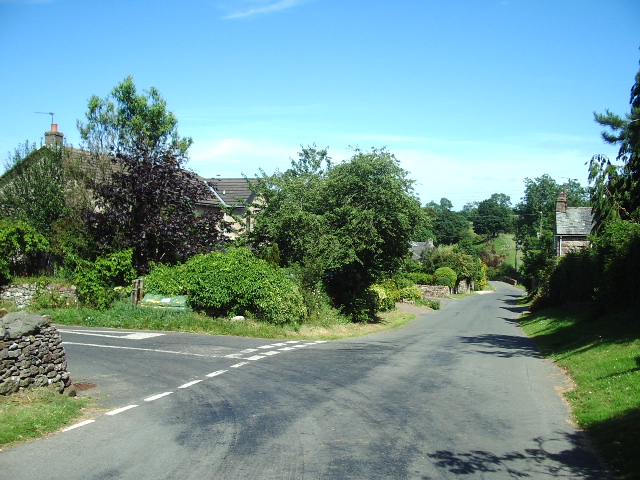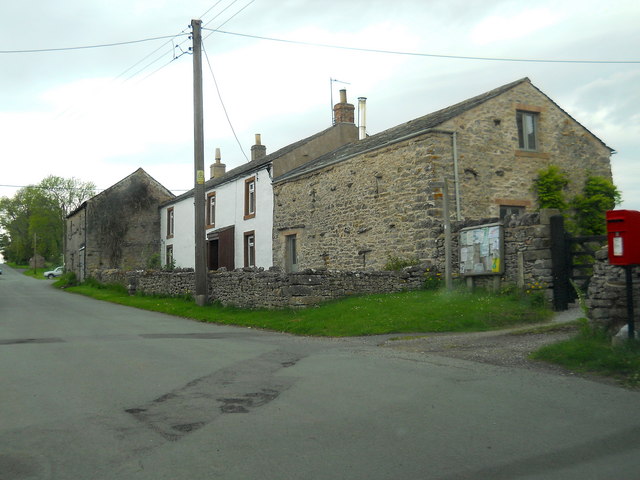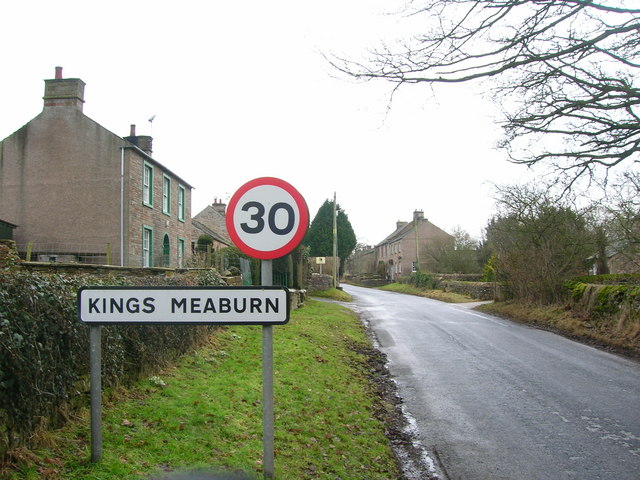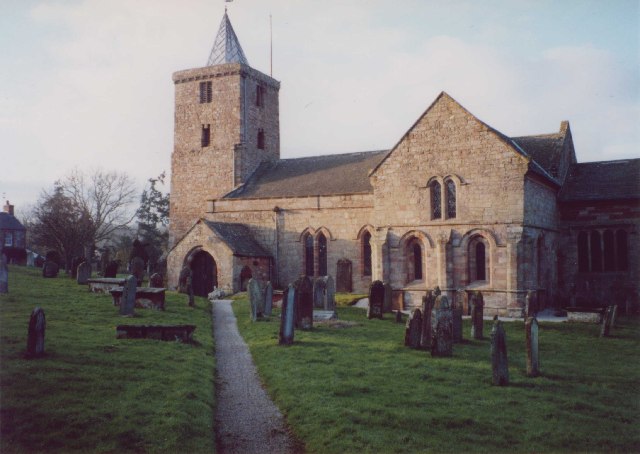Topics > Civil Parishes in Cumbria > Morland Civil Parish > Morland Parish, 1848
Morland Parish, 1848
MORLAND (St. Lawrence), a parish, in West ward and union, county of Westmorland; comprising the chapelry of Bolton, and the townships of King's Meaburn, Morland, Newby, Sleagill, Great and Little Strickland, and Thrimby; and containing 1,923 inhabitants, of whom 426 are in the township of Morland, 7 miles (S.E.) from Penrith. The parish comprises by computation 28,000 acres, of which about 500 are woodland, 500 common, and the remainder arable and pasture; the soil is chiefly a red loam, in some parts resting on clay, and in others on limestone. The surface is gently undulated; the river Eden bounds the parish on the east for some miles, and the low grounds are watered by the river Lyvennet and two small streams. Limestone and freestone of good quality are quarried extensively, and an inferior kind of coal is obtained. The living is a discharged vicarage, valued in the king's books at £11. 18.; income, £200; patrons and appropriators, the Dean and Chapter of Carlisle. The tithes were chiefly commuted for land in 1779. The church is a large edifice, originally of Norman architecture of the period of Henry II.; the old cross aisles remain, but the chancel was rebuilt about two centuries since in a more modern style, and the body of the church 80 years ago. The townships of Bolton and Thrimby have each a chapel; and there are places of worship for Wesleyans and the Society of Friends. A free school has been endowed by the Dean and Chapter with about 30 acres of common. At Chapelgarth formerly stood a chapel, dedicated to St. Mary; and within the parish are the remains of a monastic building, and several old halls now converted into farmhouses.
Extract from: A Topographical Dictionary of England comprising the several counties, cities, boroughs, corporate and market towns, parishes, and townships..... 7th Edition, by Samuel Lewis, London, 1848.

Co-Curate Page
Sleagill
- Overview About Sleagill Map Street View Sleagill is a village in the Eden district of Cumbria, located about 8 miles south-east of Penrith and 5 miles west of Appleby-in-Westmorland. Historically, …

Co-Curate Page
Bolton, Cumbria, 1848
- BOLTON, a chapelry, in the parish of Morland, West ward and union, county of Westmorland, 4 miles (N.W. by W.) from Appleby; containing 383 inhabitants. About a mile north of …

Co-Curate Page
Thrimby with Little Strickland, 1848
- THRIMBY, with Little Strickland, a chapelry, in the parish of Morland, West ward and union, county of Westmorland, 3 miles (N. by W.) from Shap; containing 200 inhabitants, of whom …

Co-Curate Page
Newby, Eden
- Overview About Newby Map Street View Newby is a village in the Eden district of Cumbria, located about 7 miles south-east of Penrith. It is part of the Civil Parish …

Co-Curate Page
King's Meaburn
- Overview About King's Meaburn Map Street View King's Meaburn is a village in the Eden district of Cumbria, situated by the River Lyvennet. The village is located about 4 miles …

Co-Curate Page
Church of St Lawrence, Morland
- Overview About St Lawrence's Church Map Street View St Lawrence's is the parish church in Morland. It is reputedly the oldest church in Cumbria, with it's tower dating from Anglo-Saxon …

Co-Curate Page
Great Strickland, 1848
- STRICKLAND, GREAT, a township in the parish of Morland, West ward and union, county of Westmorland, 3 miles (W.N.W.) from Morland; containing 277 inhabitants. This place takes its name from …


Co-Curate Page
Sleagill
- Overview About Sleagill Map Street View Sleagill is a village in the Eden district of Cumbria, located about 8 miles south-east of Penrith and 5 miles west of Appleby-in-Westmorland. Historically, …

Co-Curate Page
Bolton, Cumbria, 1848
- BOLTON, a chapelry, in the parish of Morland, West ward and union, county of Westmorland, 4 miles (N.W. by W.) from Appleby; containing 383 inhabitants. About a mile north of …

Co-Curate Page
Thrimby with Little Strickland, 1848
- THRIMBY, with Little Strickland, a chapelry, in the parish of Morland, West ward and union, county of Westmorland, 3 miles (N. by W.) from Shap; containing 200 inhabitants, of whom …

Co-Curate Page
Newby, Eden
- Overview About Newby Map Street View Newby is a village in the Eden district of Cumbria, located about 7 miles south-east of Penrith. It is part of the Civil Parish …

Co-Curate Page
King's Meaburn
- Overview About King's Meaburn Map Street View King's Meaburn is a village in the Eden district of Cumbria, situated by the River Lyvennet. The village is located about 4 miles …

Co-Curate Page
Church of St Lawrence, Morland
- Overview About St Lawrence's Church Map Street View St Lawrence's is the parish church in Morland. It is reputedly the oldest church in Cumbria, with it's tower dating from Anglo-Saxon …



